Maximum kinetic energy (Ek) of a photoelectron varies with the frequency (v) of the incident radiation as




The correct Answer is:B
Step by step video, text & image solution for Maximum kinetic energy (E_(k)) of a photoelectron varies with the frequency (v) of the incident radiation as by Physics experts to help you in doubts & scoring excellent marks in Class 12 exams.
Updated on:21/07/2023Topper's Solved these Questions
Similar Questions
The de Broglie wavelenght (λ) associated with a photoelectron varies with the frequency (v) of the incident radiation as,[v0 is threshold frequency]:
View SolutionAccording to Einstein's photoelectric equation, the graph between kinetic energy of photoelectrons ejected and the frequency of the incident radiation is :
View Solution
Knowledge Check
The kinetic energy (Ek) of a photoelectron varies with the frequency (v) of the incident radiation as which of the following graph ?
A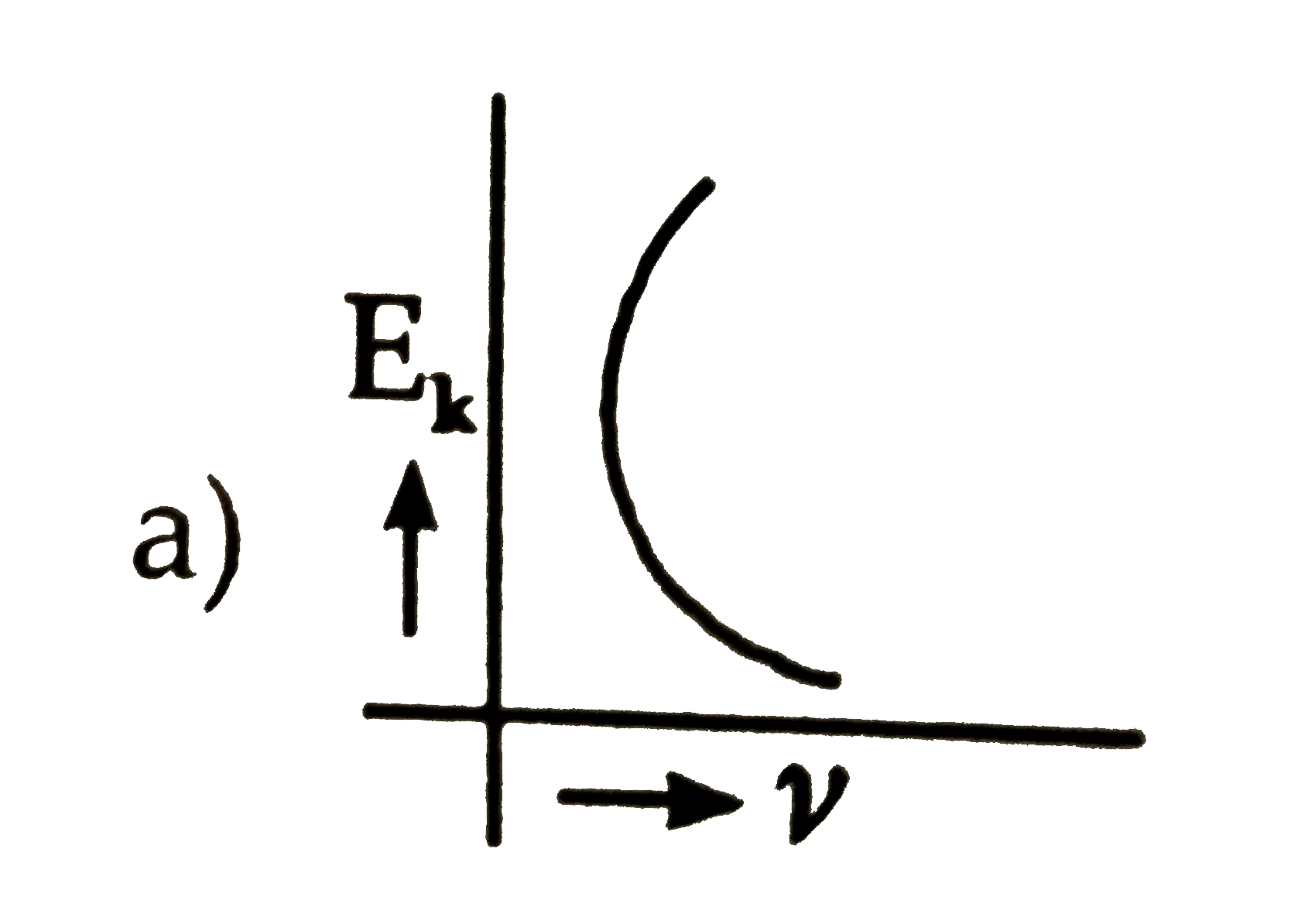 B
B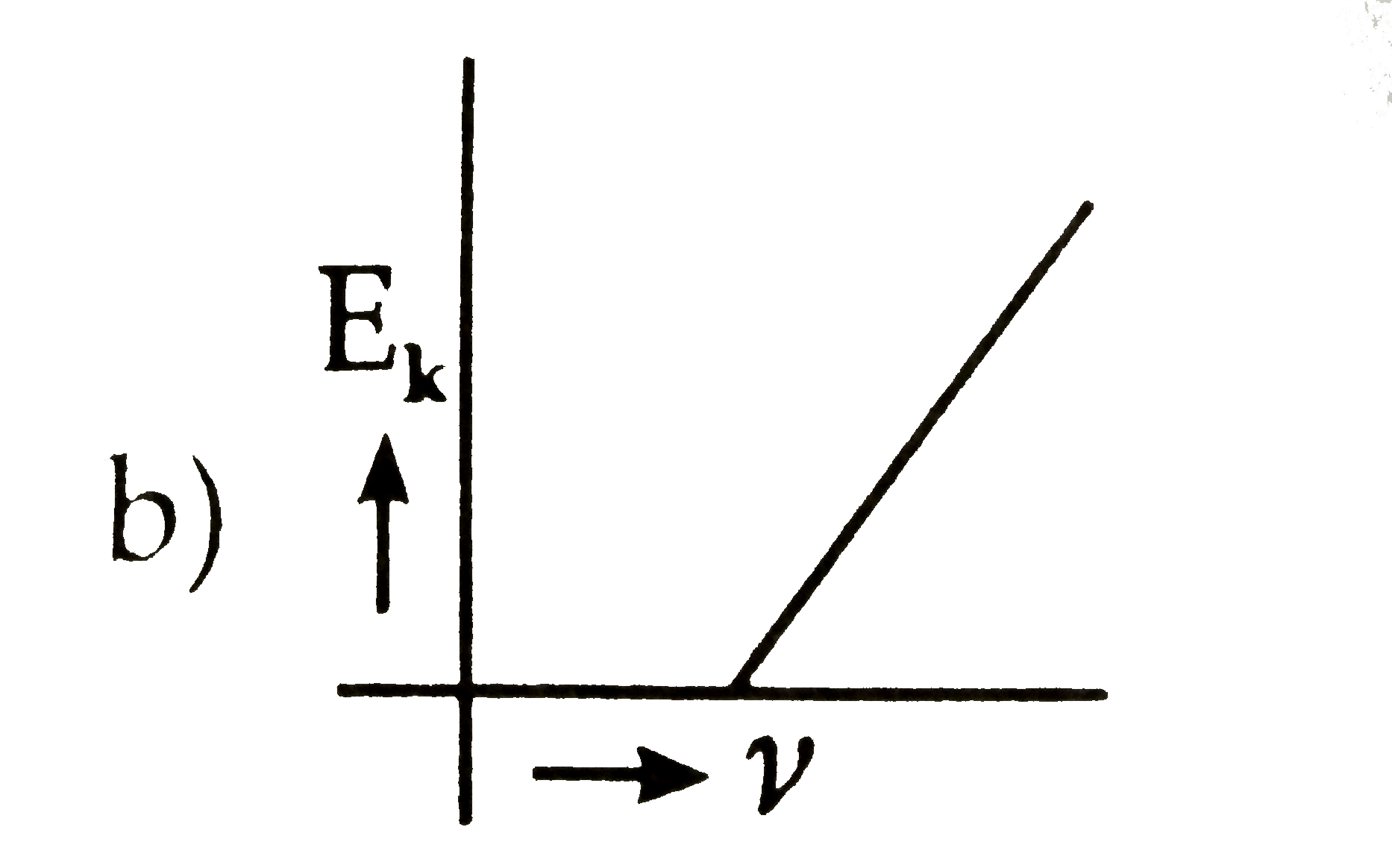 C
C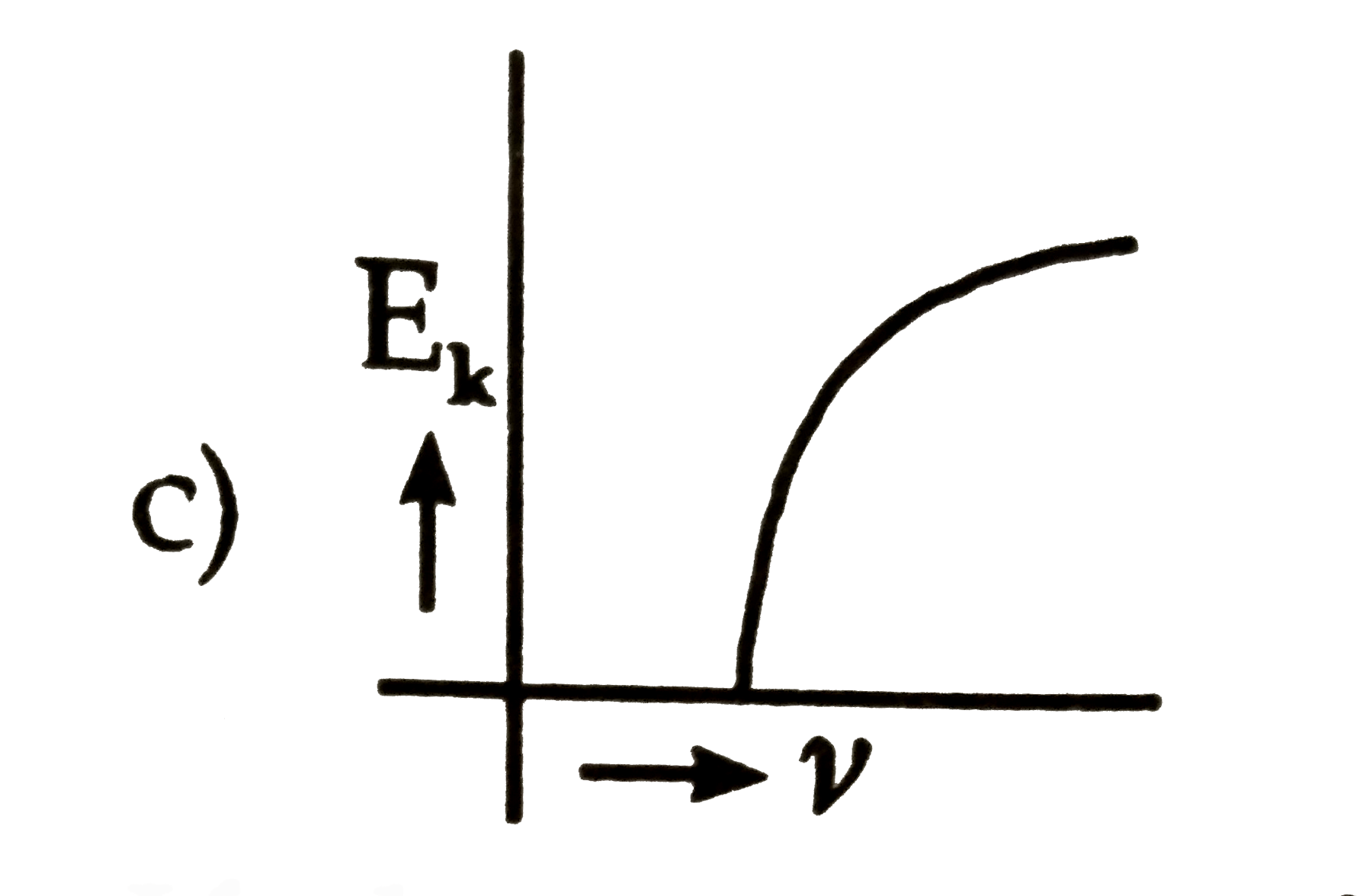 D
D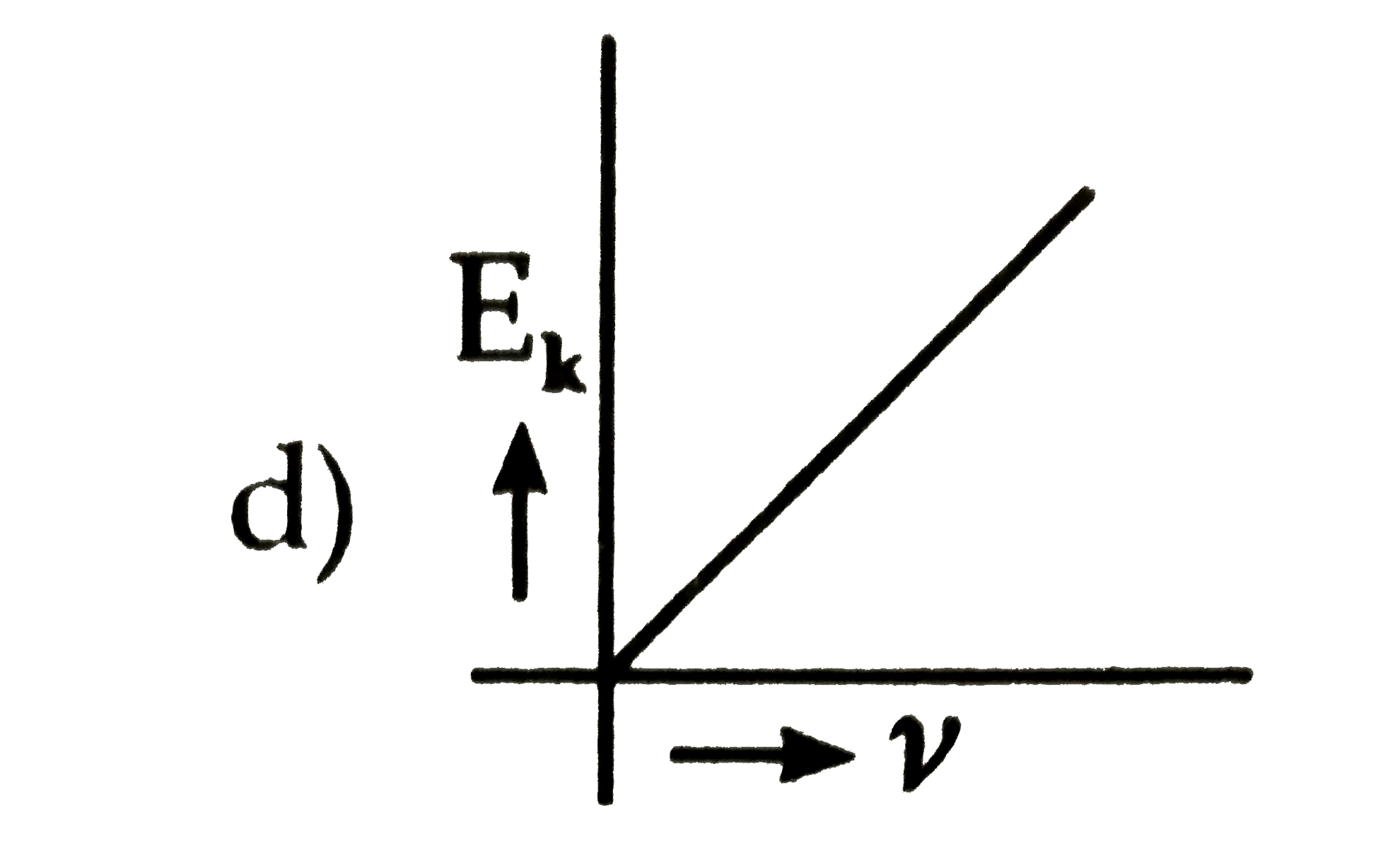
The maximu kinetic energy (Ek) of the photoelectron varies with frequency (v) of the incident light as shown by the curve:
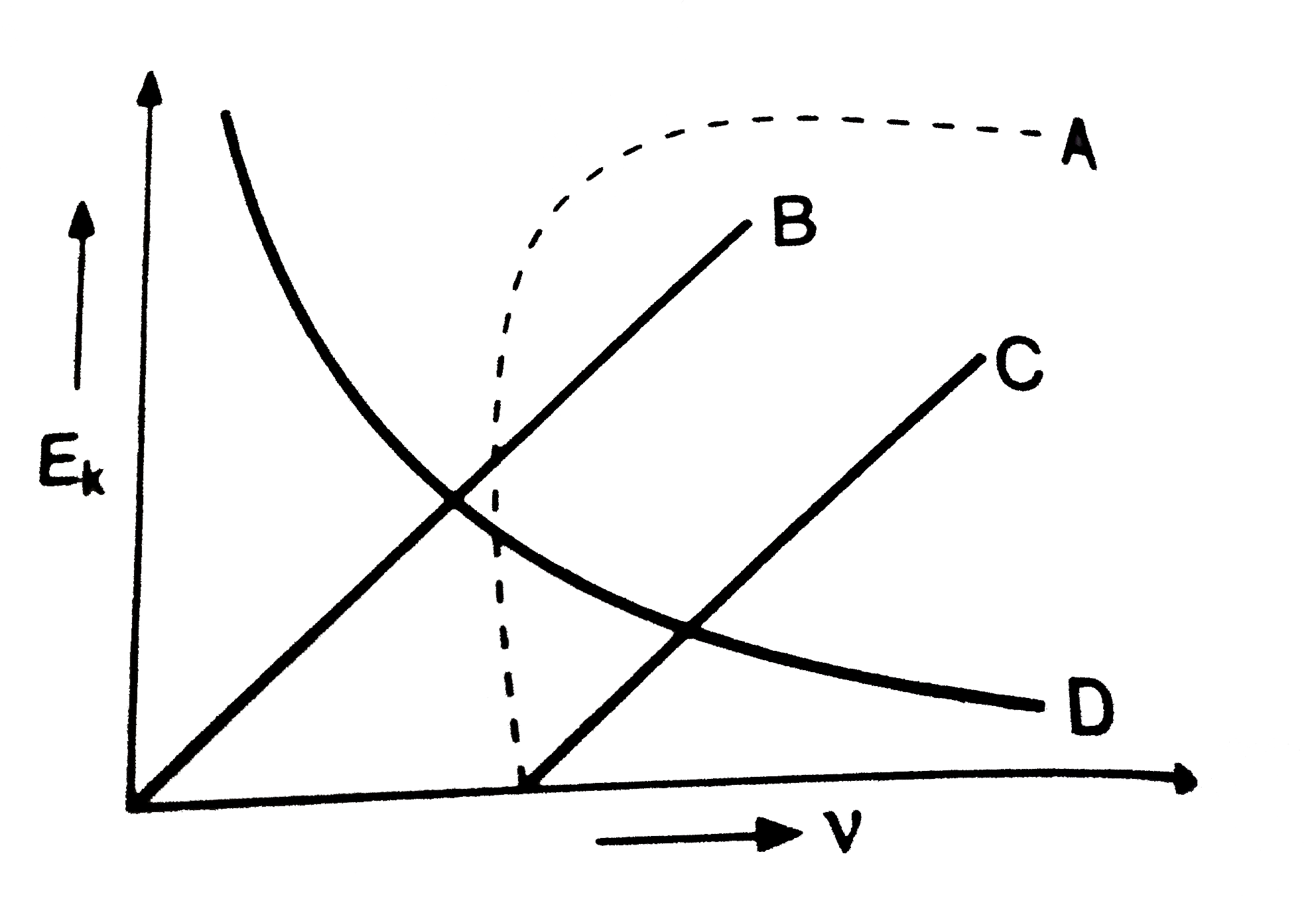 AABBCCDD
AABBCCDDThe maximum kinetic energy of the photoelectrons veries
AInversely with the intensity and is independent of the frequency of the incident radiationBInversely with the frequency and is independent of the intensity of the incident radiationCLinearly with the frequency and is independent of the intensity of the incident radiationDLinearly with the frequency and is independent of the intensity of the incident radiation
For the photoelectric effect, the maximum kinetic energy Ek of the emitted photoelectrons is plotted against the frequency ν of the incident photons as shown in the figure. The slope of the curve gives

View SolutionAssertion : If U.V radiations and infrared radiations fall on a metal plate, stopping potential would be grater for infrared radiations.
Reason : Maximum kinetic energy of photoelectrons is inversely proportional to the frequency of incident radiation.
View SolutionAccording to Einstein's photoelectric equation, the plot of the maximum kinetic energy of the emitted photoelectrons from a metal versus frequency of the incident radiation gives a straight line whose slope
View SolutionFor the photoelectric effect, the maximum kinetic energy Ek of the emitted photoelectrons is plotted against the frequency of the incident photons as shown in the figure. The slope of the curve gives

View Solution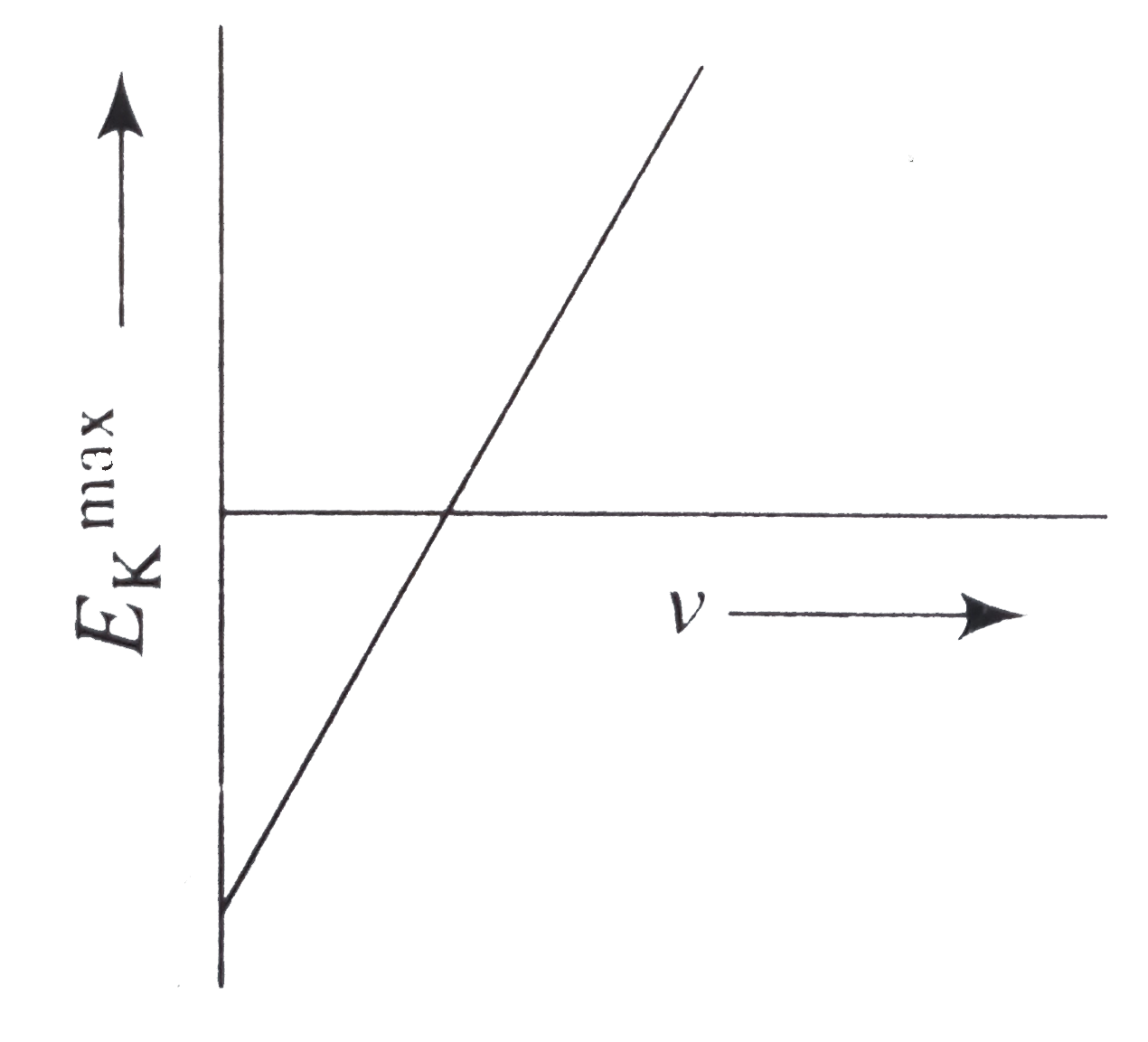
The maximum kinetic energy of the emitted photoelectrons against frequency υ of incident radiation is plotted as shown in Fig. This graph help us in determining the following physical quantities
View Solution
